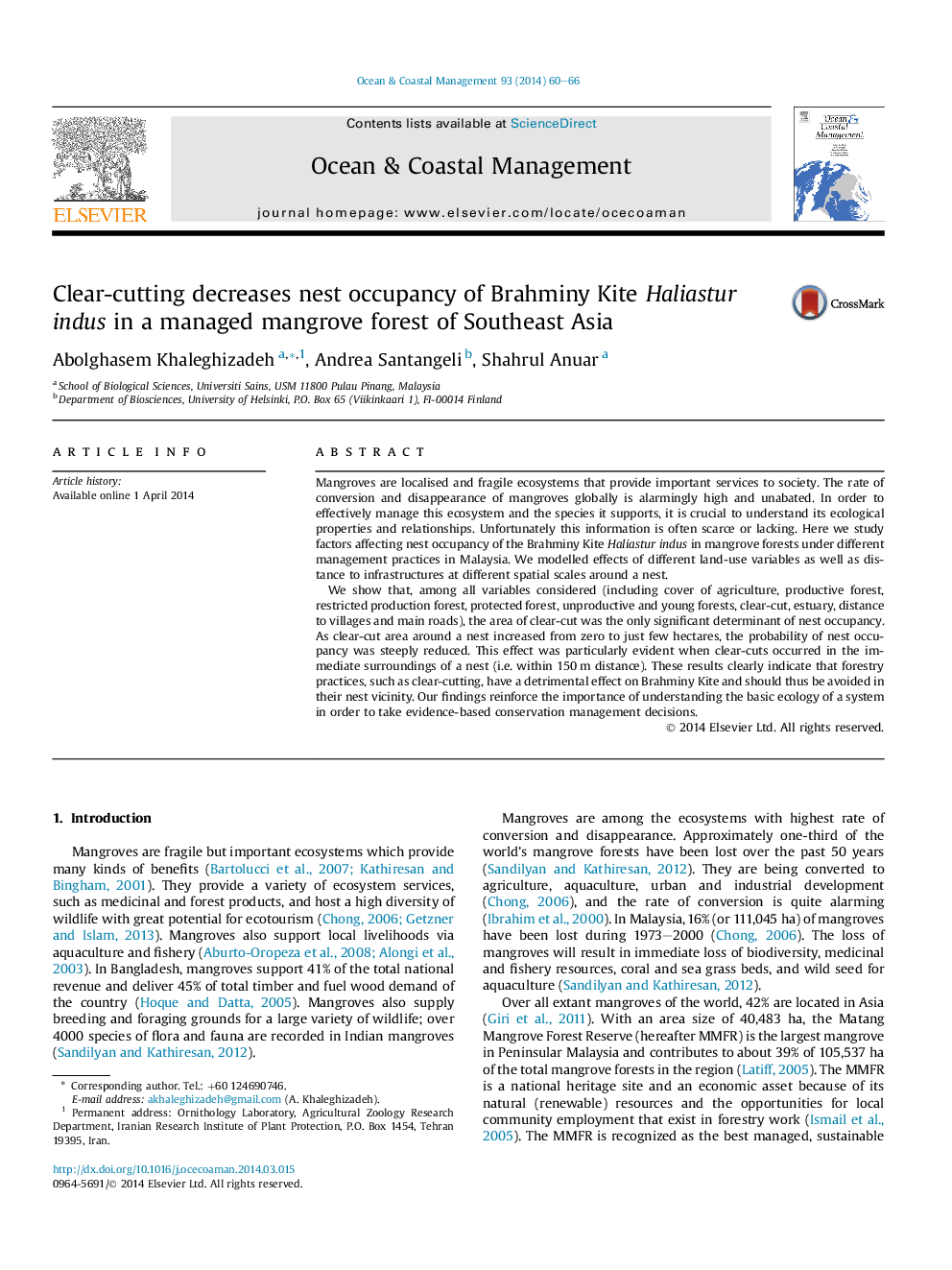| Article ID | Journal | Published Year | Pages | File Type |
|---|---|---|---|---|
| 1723617 | Ocean & Coastal Management | 2014 | 7 Pages |
•Mangroves are rapidly disappearing ecosystems that provide important services.•Mangroves and associated wildlife are least studied.•We studied breeding habitat requirements of a mangrove predator, Brahminy Kite.•We showed that clear-cutting near a kite nest significantly reduced its occupancy.•Mangrove management should avoid clear-cutting near kite nests in southeast Asia.
Mangroves are localised and fragile ecosystems that provide important services to society. The rate of conversion and disappearance of mangroves globally is alarmingly high and unabated. In order to effectively manage this ecosystem and the species it supports, it is crucial to understand its ecological properties and relationships. Unfortunately this information is often scarce or lacking. Here we study factors affecting nest occupancy of the Brahminy Kite Haliastur indus in mangrove forests under different management practices in Malaysia. We modelled effects of different land-use variables as well as distance to infrastructures at different spatial scales around a nest.We show that, among all variables considered (including cover of agriculture, productive forest, restricted production forest, protected forest, unproductive and young forests, clear-cut, estuary, distance to villages and main roads), the area of clear-cut was the only significant determinant of nest occupancy. As clear-cut area around a nest increased from zero to just few hectares, the probability of nest occupancy was steeply reduced. This effect was particularly evident when clear-cuts occurred in the immediate surroundings of a nest (i.e. within 150 m distance). These results clearly indicate that forestry practices, such as clear-cutting, have a detrimental effect on Brahminy Kite and should thus be avoided in their nest vicinity. Our findings reinforce the importance of understanding the basic ecology of a system in order to take evidence-based conservation management decisions.
